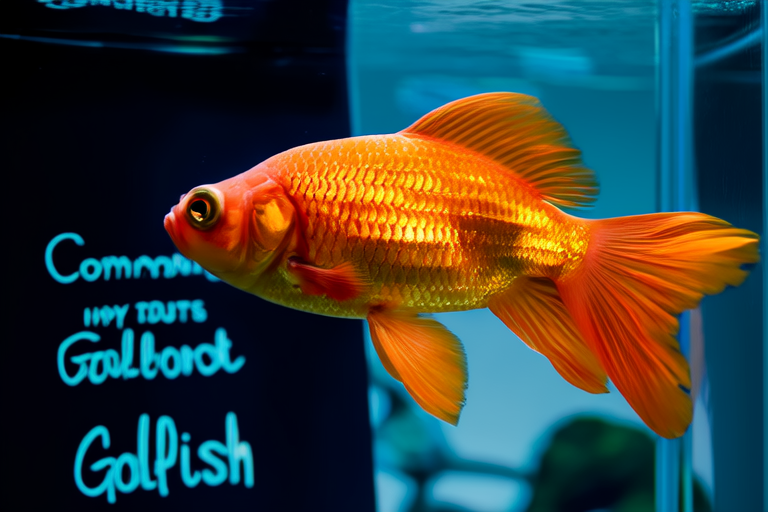Debunking Common Myths About Goldfish Care
Goldfish are one of the most popular fish species among pet enthusiasts, but there are several misconceptions about their care. This article aims to dispel some of these myths and provide accurate information on how to properly care for these beautiful creatures.
The Myth: Goldfish Have Only Three-Second Memories
One of the most pervasive myths about goldfish is that they have a memory span of just three seconds. This misconception has led many people to believe that goldfish are unintelligent and do not require much stimulation or interaction. In reality, goldfish possess a more complex cognitive system than previously thought.
Research conducted by scientists at the University of Edinburgh revealed that goldfish can remember past experiences for up to five months. They also demonstrated problem-solving skills, recognizing patterns, and even developing preferences for certain foods. This intelligence makes it important to provide mental stimulation through toys, plants, and regular feeding times.
The Myth: Goldfish Are Low-Maintenance Pets
Another widespread belief is that goldfish are easy to care for, requiring minimal attention beyond occasional feeding. However, this couldn’t be further from the truth. Properly maintaining a goldfish tank involves several key factors, including water quality, temperature control, and regular maintenance.
To ensure optimal water conditions, it’s crucial to perform weekly partial water changes (about 25%) and clean the filter media monthly. Additionally, maintaining a stable temperature between 68°F and 74°F (20°C – 23°C) promotes healthy growth and prevents stress-related illnesses. Feeding your goldfish a balanced diet consisting of high-quality flakes, pellets, and occasional live or frozen foods helps maintain their vitality.
The Myth: Goldfish Thrive in Small Bowls
Perhaps the most dangerous myth regarding goldfish care is the notion that they can live happily in small bowls. While it may seem convenient to keep a goldfish in a tiny container, doing so poses significant risks to its health and well-being.
Goldfish produce waste, which includes ammonia, nitrite, and nitrate—substances harmful if allowed to accumulate in the water. A large tank equipped with filtration systems ensures adequate circulation and filtration, preventing toxin buildup. For single goldfish, a minimum tank size of 20 gallons (75 liters) is recommended; however, larger tanks are preferable due to increased swimming space and better water quality.
The Importance of Appropriate Tank Size
Adequate space allows goldfish to swim freely without feeling cramped or stressed. Overcrowding increases competition for resources like oxygen and food, leading to aggressive behavior and potential injuries. Moreover, larger tanks promote better water circulation, reducing the likelihood of stagnant areas where toxins might concentrate.
In addition to physical comfort, providing ample room encourages natural behaviors such as exploration and play. Introducing floating decorations, caves, and tunnels stimulates curiosity and provides hiding spots when needed.
Maintaining Water Quality
Water quality plays a vital role in keeping your goldfish healthy. Regular testing of parameters like pH, ammonia, nitrite, and nitrate levels ensures that conditions remain within safe ranges. Ammonia levels should always read zero, while nitrite and nitrate concentrations should stay below 20 ppm and 40 ppm respectively.
Investing in a good quality filter capable of handling the volume of water in your tank is essential. Filters remove debris, uneaten food particles, and harmful chemicals from the water column, promoting clearer visibility and cleaner living conditions.
Proper Diet for Goldfish Health
Feeding your goldfish a varied diet rich in nutrients supports overall health and longevity. High-protein foods like brine shrimp, bloodworms, and daphnia offer valuable protein sources necessary for muscle development. Vegetables such as zucchini, peas, and spinach contribute vitamins and minerals crucial for immune function.
It’s important not to overfeed your goldfish, as excess food leads to poor water quality and obesity. Limit feedings to twice daily, offering only what your fish can consume within two minutes. Monitor their appetite closely, adjusting portion sizes accordingly.
Conclusion
By understanding and addressing these common myths about goldfish care, you can provide your pet with a happy and healthy environment. Remember that goldfish deserve thoughtful consideration when choosing their home, ensuring they receive proper nutrition, mental stimulation, and clean water.
With the right knowledge and commitment, owning a goldfish can be a rewarding experience filled with joy and companionship. Let us strive towards creating ideal habitats for our aquatic friends, fostering long-lasting bonds built on mutual respect and care.
